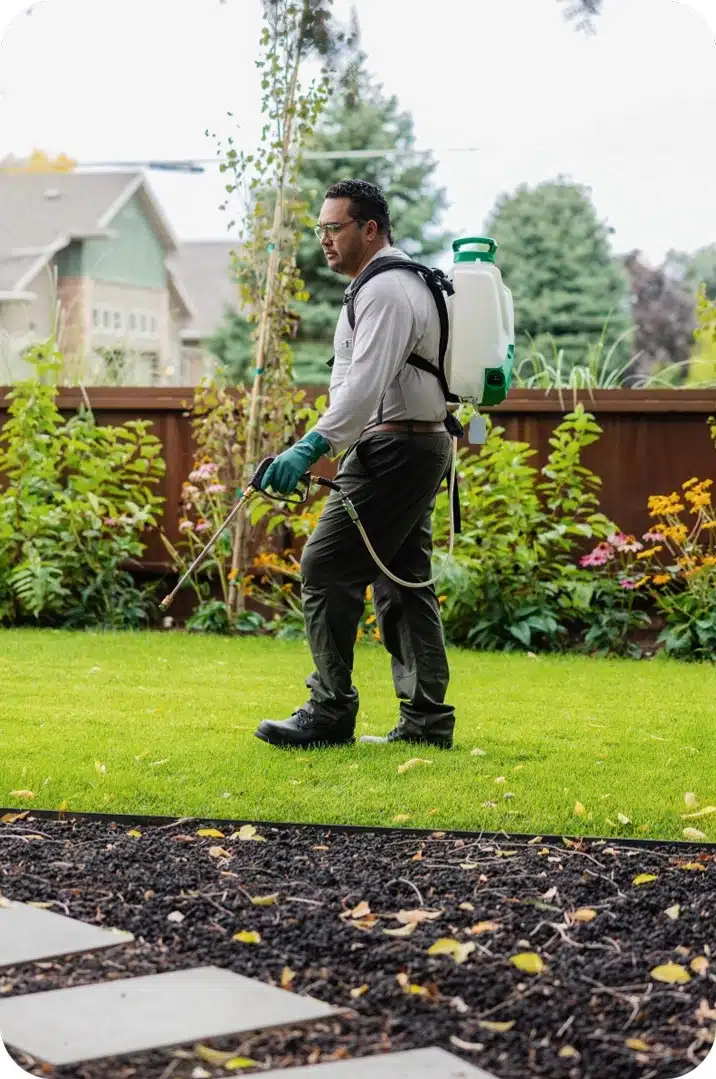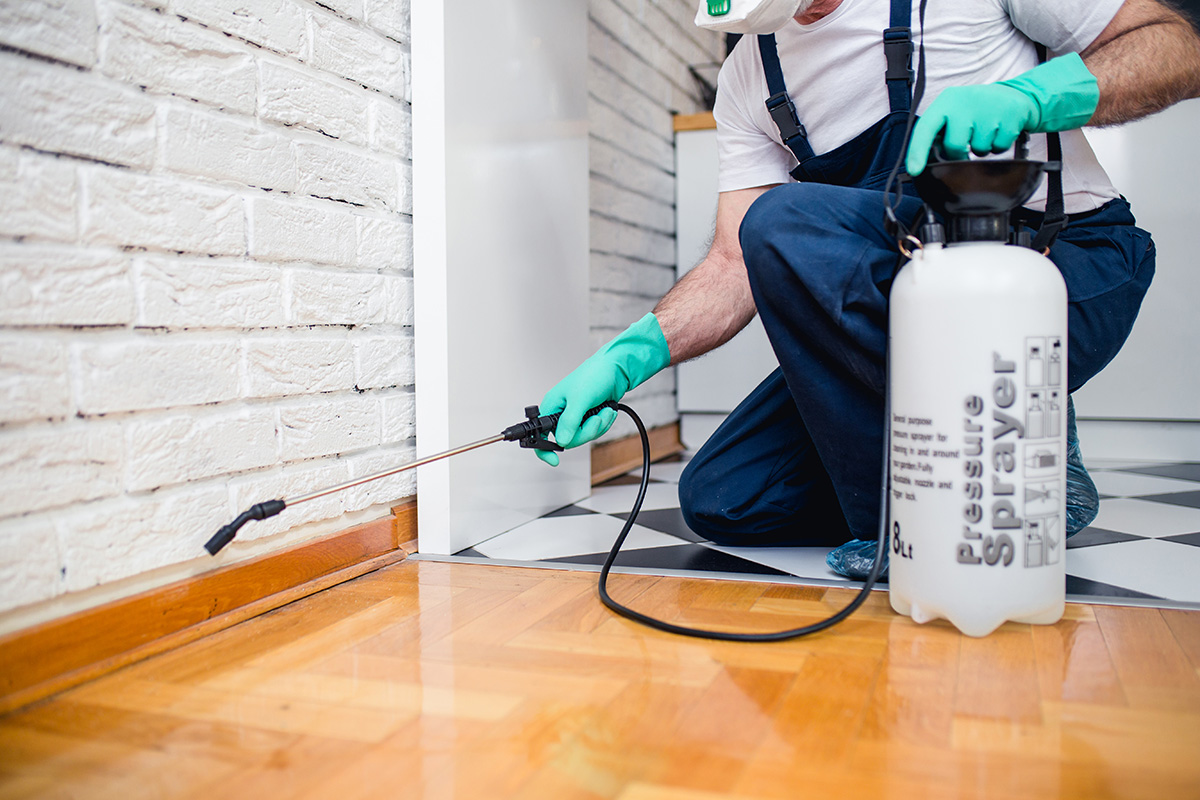A1 Charlotte Pest Control Companies - Your Neighborhood Pest Experts
Wiki Article
Bed Insect Therapy Break Down: Comparing Chemical Vs. Non-Chemical Solutions
In the world of bug control, especially when taking care of the persistent problem of bed bugs, the option between chemical and non-chemical therapy options can be an essential one. Both approaches use unique advantages and disadvantages, affecting elements such as efficiency, safety considerations, and overall expense. By checking out the nuanced details of each method, a clearer understanding of which course to pursue in resolving a bed pest invasion can be achieved.Performance of Chemical Treatments
Chemical treatments for bed insect problems have been extensively identified for their powerful and fast efficiency in removing these bugs. When thinking about the effectiveness of chemical therapies, it is important to understand that they can offer a fast and thorough remedy to a bed insect issue.Moreover, chemical therapies have the benefit of offering recurring results, suggesting that they can remain to remove bed bugs even after the preliminary application. This residual activity is specifically useful in combating any type of potential re-infestations. Additionally, the rapid action of chemical therapies can bring relief to people encountering severe bed bug invasions, permitting them to regain control of their home rapidly.
Safety Worries With Chemical Solutions
When using chemical options for bed pest treatment is making certain the safety and security of passengers and the setting,One important element that requires cautious consideration. While chemical therapies can be effective in eradicating bed bugs, they might present risks otherwise taken care of correctly. One of the primary safety concerns with chemical services is the possible harm they can cause to human health and wellness. Exposure to specific chemicals utilized in bed pest therapies can result in respiratory system problems, skin irritation, or various other unfavorable reactions, particularly in individuals with pre-existing conditions or sensitivities. In addition, improper application or dose of chemical pesticides can result in hazardous deposits lingering in the cured area, posturing lasting health and wellness risks to owners.Moreover, the ecological effect of chemical options is another significant consideration. Some chemicals made use of in bed bug therapies may be unsafe to valuable insects, wild animals, and ecosystems if they seep into the soil or water supply. It is essential to make use of chemical treatments carefully, complying with safety standards, and taking into consideration less toxic choices to alleviate these dangers and make sure the risk-free and efficient monitoring of bed insect problems.
Advantages of Non-Chemical Approaches
Considering the prospective security issues and ecological effect associated with chemical solutions for bed pest treatment, checking out non-chemical approaches provides an appealing option with a number of distinct advantages. Non-chemical approaches offer a safer choice for homes, particularly those with family pets, individuals, or kids conscious rough chemicals. These approaches eliminate the dangers of exposure to hazardous substances, minimizing the possibility for unfavorable health results. Furthermore, non-chemical therapies are eco pleasant, as they do not add to air or water pollution, making them a lasting choice for bug control.Furthermore, non-chemical solutions can be effective in targeting bed bugs, consisting of hard-to-reach areas where chemical therapies may not permeate. Techniques such as heat therapy, vacuuming, steam cleansing, and bed mattress coverings give detailed obliteration without the use of damaging chemicals. Additionally, non-chemical strategies can be less turbulent, needing marginal preparation and allowing for quicker reentry into dealt with locations. In general, selecting non-chemical bed pest treatment techniques not just focuses on safety and environmental management however likewise guarantees reliable and comprehensive pest control.
Limitations of Non-Chemical Treatments

In addition, non-chemical therapies commonly call for numerous applications to attain effective removal. top article This can be taxing and might not always guarantee full elimination of all bed bugs and their eggs, particularly in surprise or hard-to-reach places.
In addition, the success of non-chemical treatments greatly counts on correct implementation and thoroughness, which can be testing for individuals without specialist knowledge. Inadequate application of non-chemical techniques might result in incomplete obliteration, leading to consistent infestations and the need for additional treatments.
As a result, while non-chemical therapies have their benefits, it is necessary to acknowledge these constraints and consider them when determining one of the most effective approach for handling bed insect problems.
Price Contrast: Chemical Vs. Non-Chemical Options
Offered the restrictions connected with non-chemical therapies, an essential facet to evaluate in the context of bed pest administration is the expense contrast between chemical and non-chemical alternatives. In contrast, non-chemical therapies like heat therapy or heavy steam can be much more expensive, with expenses ranging from $1,000 to $6,000 for an entire home. While the preliminary cost of chemical therapies may seem lower, numerous treatments might be called for to fully remove the problem, potentially enhancing the general expense.Final Thought

Thinking about the potential safety and security concerns and ecological impact connected with chemical remedies for bed bug treatment, discovering non-chemical methods offers an appealing choice with several distinct advantages.Provided the constraints linked with non-chemical therapies, a vital facet to examine in the context of bed bug management is the expense contrast in between chemical and non-chemical options. In contrast, non-chemical treatments like warm therapy or vapor can be much more costly, with costs ranging from $1,000 to $6,000 for an entire home. While the preliminary expense of chemical treatments may seem lower, several treatments may be needed to fully remove the problem, potentially boosting the total price.In verdict, when contrasting chemical and non-chemical bed bug therapy alternatives, it is vital to think about performance, security, advantages, limitations, and cost.
Report this wiki page